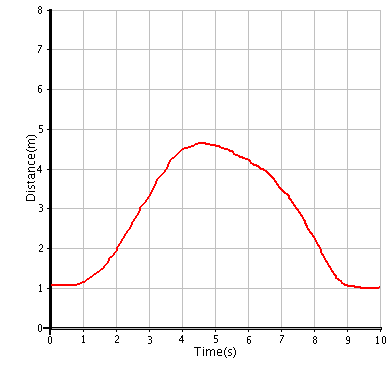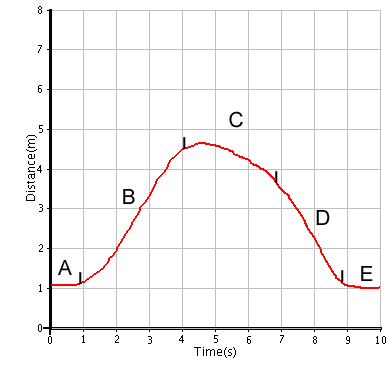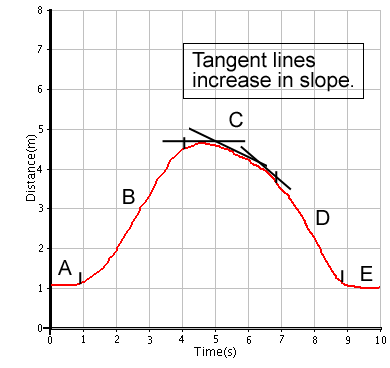 | ||
| || home ||| units ||||| help | ||
| All Units | > | Unit 12 - Motion | > | Investigation 2 - Displaying changing velocity | > | Trial 2 |
Trial 2 - Speeding Up?
-
Observe the graph below.
Write a short description for the graph that tells the story of the movement. Be sure to include numerical information about the direction of your motion, the speed of your motion, and your distance from the starting point when changes in direction and speed occurred.

-
With your back to the motion sensor,
try to reproduce the graph from your
description. Refer to Technical Hints to connect the
motion sensor. Refer to Technical Hints to record a
series of measurements. Repeat until you
capture the desired graph. Save the graph.
Refer to Technical Hints to save graphs.

-
Now that you have experienced the
needed changes in velocity to reproduce the
graph, select the letters from the graph
shown above to identify the following
motions. Write a short justification for
each selection.

I. no movement

II. moving at same or constant velocity

III. changing velocity

IV. increasing velocity

V. decreasing velocity

-
Based on your explanation of the
graph, do you agree that a straight line
shows constant velocity?

-
Why would changing velocity,
otherwise known as acceleration, be shown as
a curve on the graph? The black lines,
called tangents, meet the curve at a single
point and show the slope of the curve at
that point. Notice that the tangents are
constantly changing in slope.


 |  |  |
Copyright 2005 The Concord Consortium, All rights reserved.